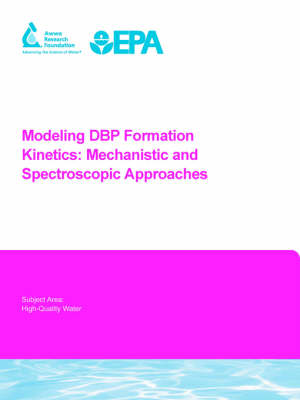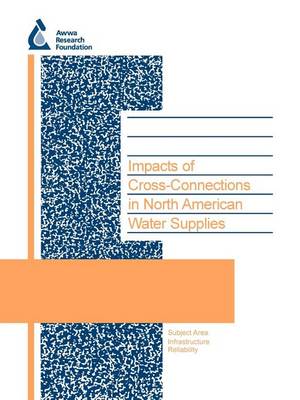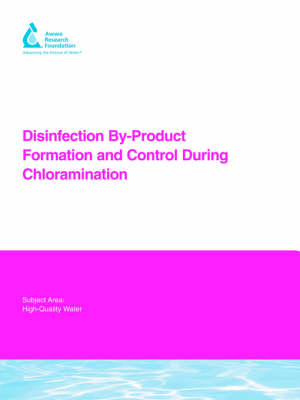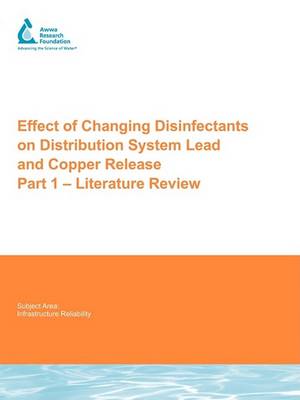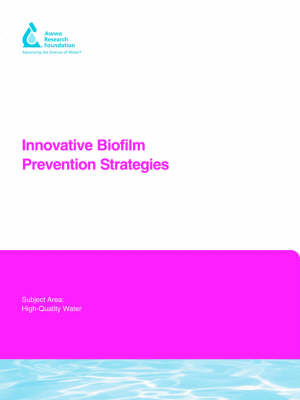Water Research Foundation Report
5 total works
Modeling DBP Formation Kinetics
by Gregory V Korshin, H. Chang, and M. Robin Collins
Published 1 January 2005
Numerous statistical models for DBP formation kinetics exist, along with a smaller number of mechanistic models. These models require extensive calibration, and their applicability under conditions that differ from those used in the calibration is questionable (especially the statistical models). Models that are scientifically defensible and that have a tractable number of fitting parameters are needed. Virtually no data have been collected for DBP formation at very short reaction times.The primary objective of this project was to develop a mechanistic kinetic model of THM and HAA formation consistent with current understanding of the reaction mechanisms. Ideally, the model would account for the effects of Cl dose, pH, temperature, and bromide concentration on DBP formation kinetics and speciation. Secondary objectives included the study of DBP formation at very short reaction times ( 1 s) and development of a model for DBP formation as a function of the changes in absorbance of the sample upon chlorination.Originally published by AwwaRF for its subscribers in 2004. This publication can be purchased and downloaded via Pay Per View on Water Intelligence Online - click on the Pay Per View icon below
Impacts of Cross-Connections in North American Water Supplies
by J. Lee, P. Schwartz, P. Sylvester, L. Crane, James F. Haw, H. Chang, and H. Kwon
Published 1 January 2004
For many years, cross-connections and backflow have been well understood. Programs to prevent unhealthy situations from happening have been in place for many years. However, a general and extensive study on their impacts, types of programs, incidents, and financial repercussions has not been conducted. Many computer models for steady state or quasi-steady state simulation exist, but applications for transient state simulation, especially demonstrating backflow incidents, have rarely been done.The first objective of this project was to assess the impacts, financial and otherwise, of cross-connections and cross-connection control in North American water supplies and to North American water purveyors. The project team also planned to create and use a computer model to simulate and demonstrate hydraulic changes in the transient state.Of the over 700 utilities surveyed, 91% were found to have a cross-connection control program. Survey data indicated 65% of cross-connections were indirect and 35% were direct. Sudden changes of water demands in piping networks can cause sub-atmospheric pressures within the systems resulting in backflow incidents. Systems with larger variances in ground elevations have the greater possibility of creating sub-atmospheric pressures as water demands in the systems change.Originally published by AwwaRF for its subscribers in 2003 This publication can also be purchased and downloaded via Pay Per View on Water Intelligence Online - click on the Pay Per View icon below
Disinfection By-Product Formation and Control During Chloramination
by Gerald E. Speitel, P. Pope, M. Robin Collins, and M. Martin-Doole
Published 31 May 2005
In response to current and anticipated disinfection by-product (DBP) regulations, many utilities have begun to use chloramines as a secondary disinfectant. Chloramination produces DBPs such as haloacetic acids (HAAs), trihalomethanes (THMs), and haloacetonitriles (HANs) in lower concentrations than chlorination. Previous research has demonstrated that dihalogenated haloacetic acids (DXAAs) are the most commonly formed HAAs during chloramination. Some utilities may have difficulty meeting the new maximum contaminant level (MCL) for HAAs because chloramination does not limit the formation of DXAAs to the same extent as it does other DBPs. The objectives of this project were to: better understand the reactivity of key natural organic matter (NOM) fractions and the effects of treatment processes with respect to dihaloacetic acid (DXAA) formation, better delineate the influence of pH and Cl2/N ratio on DXAA formation, characterize DXAA formation kinetics and the impact of treatment processes on the kinetics, especially the impact of prechlorination, calculate the rate and extent of DXAA formation at elevated summer water temperatures, and determine the effect of bromide concentration on DXAA speciation and kinetics.
Effect of Changing Disinfectants on Distribution System Lead and Copper Release
by Glen Boyd, Kylee Dewis, Anne Sandvig, Gregory Kirmeyer, Steven Reiber, and Gregory V Korshin
Published 31 May 2007
The objective of this research is to determine the effects of changing disinfectants (from free chlorine to chloramines and vice versa) on levels and rates of leaching from lead, brass, and copper components in the distribution system. This project will also study the effects of changing disinfectants on galvanic coupling on metals release and existing scales, and will advance our understanding of the nature of lead and copper solids.
This report summarizes existing information regarding the effects of changing disinfectants on rates and concentrations of metals leaching from distribution system components. Knowing that within the next five years, more than 100 sizeable utilities will undergo disinfection conversion to chloramines, AwwaRF chose to publish the results of this research in two parts. Part 1 (this report) was published in October 2006, within a few months of the start of the project in order to provide timely information to utilities concerning the effects of changing disinfectants and compliance with the Lead and Copper Rule. Part 2 (Laboratory Studies, Pipe Loop Testing, and Field Sampling) should be available by early 2009, after the completion of the laboratory and field sampling that will be conducted through May 2008.
This report summarizes existing information regarding the effects of changing disinfectants on rates and concentrations of metals leaching from distribution system components. Knowing that within the next five years, more than 100 sizeable utilities will undergo disinfection conversion to chloramines, AwwaRF chose to publish the results of this research in two parts. Part 1 (this report) was published in October 2006, within a few months of the start of the project in order to provide timely information to utilities concerning the effects of changing disinfectants and compliance with the Lead and Copper Rule. Part 2 (Laboratory Studies, Pipe Loop Testing, and Field Sampling) should be available by early 2009, after the completion of the laboratory and field sampling that will be conducted through May 2008.
Innovative Biofilm Prevention Strategies
by A. Bargmeyer, Mark E. Shirtliff, P Butterfield, Anne Camper, Melinda J. Friedman, and Glen Boyd
Published 31 May 2005
Biofilms are ubiquitous in drinking water distribution systems, regardless of the type of treatment or disinfection employed by a utility. In general these biofilms pose no direct health threat unless their growth becomes excessive or pathogens that are inadvertently introduced into a distribution system become part of the biofilm microbial community. While biofilm can cause problems associated with taste and odor or corrosion, the possible presence and persistence of opportunistic pathogens within the biofilm may be the most important concern. Current methods employed to minimize biofilm include the use of residual disinfectants, reduction of organic matter or inorganic electron donors (e.g. ammonia) in the water, use of pipe materials and coatings that reduce the amount of biofilm accumulation, frequent flushing of pipelines, and the practice of corrosion control treatment when corroded iron pipes are present. New strategies for the control of biofilm are being discovered and tested in a wide variety of settings, but generally not within the context of drinking water distribution systems. It is therefore important to investigate the most promising new biofilm control strategies to determine their applicability to the very complex drinking water distribution system environment. The goal of this research was to investigate novel biofilm control strategies and technologies that could possibly be applied to drinking water systems. The intent of the research was to serve as an exploratory look at new control options and determine if any could warrant. Originally published by AwwaRF for its subscribers in 2004.
